

News Blogs
- Home
- News Blogs
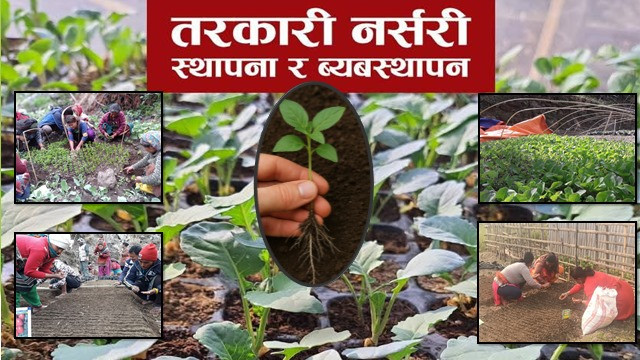
Back to Nature – Organic Farming (Non-Formal Training) on Promoting Nutrition, Health, Environment & Sustainability
Back to Nature – Organic Farming (Non-Formal Training) on Promoting Nutrition, Health, Environment & Sustainability
Organic Farming COW manure
COW manure is a rich, organic fertilizer that can be used on many plants and crops. It's a good source of nutrients like nitrogen, phosphorus, and potassium.
Benefits of cow manure
Improves soil structure: Manure improves the soil's ability to hold water and nutrients.
Increases plant productivity: Manure can help plants grow and develop.
Enhances soil microbial activity: Manure can help break down and stabilize soil organic carbon.
Reduces erosion: Manure can help reduce sediment loss and erosion over time.
How to use cow manure
Compost it: Composting manure can help eliminate weed seeds and harmful ammonia.
Wait until it's dried: Drying manure can help reduce odors.
Check the texture and smell: When manure is ready to use, it should be dark, rich, and crumbly, with a fresh, organic smell.
Mix it in: Mix manure into the top few inches of soil.
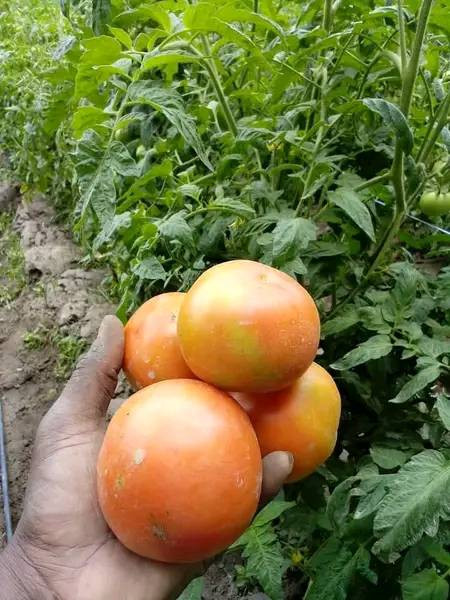
Fungicide Application in Tomato Farming
Fungicide Application in Tomato Farming
Fungal diseases like early blight, late blight, and powdery mildew are major threats to tomato farming. Proper fungicide application can effectively control them.
1. Types of Fungicides
Contact Fungicides (e.g., Mancozeb, Copper-based fungicides) – Prevent fungi from infecting plants.
Systemic Fungicides (e.g., Metalaxyl, Propiconazole) – Absorbed into the plant and provide longer protection.
2. Best Practices for Fungicide Application
Timing: Apply preventively or immediately after detecting symptoms.
Frequency: Typically, apply every 5–10 days, but adjust based on weather conditions and disease pressure.
Mode of Application:
Use a knapsack sprayer for even coverage.
Spray early in the morning or late in the evening to prevent evaporation.
Rotation of Fungicides: Avoid using the same active ingredient repeatedly to prevent resistance buildup
How Overhead Watering and Rainfall Breed Fungal Diseases
1. Increased Leaf Wetness
Fungi thrive in moist conditions. When leaves stay wet for long periods, it creates the perfect environment for fungal spores to germinate.
2. Splash Dispersal of Spores
Rainfall and overhead watering can cause spores from infected soil or plants to splash onto healthy leaves, spreading the disease.
3. Humidity and Poor Air Circulation
Excess moisture increases humidity, leading to condensation on plant surfaces, which encourages fungal growth.
Overcrowded planting further traps humidity, worsening the problem.
4. Weakening of Plant Structure
Continuous water exposure can weaken plant tissues, making them more vulnerable to infections.
Solution:
Use drip irrigation instead of overhead watering.
Water early in the morning to allow drying before nightfall.
Apply mulch to reduce soil splash and excess moisture.
Use fungicides preventively before prolonged rains.
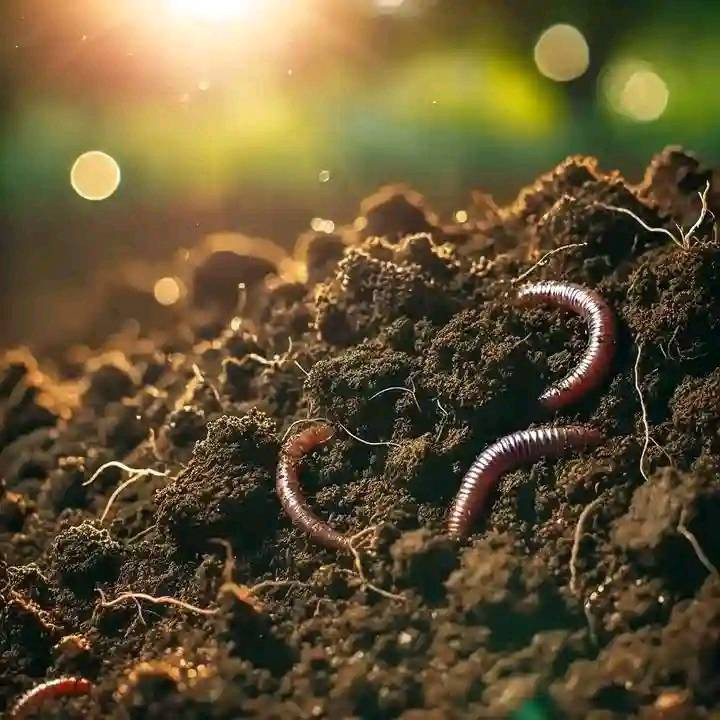
ORGANIC FARMING
ORGANIC FARMING:
Organic farming is an environmentally conscious agricultural approach that revolves around cultivating crops without the use of synthetic chemicals, pesticides, herbicides or genetically modified organisms (GMOs).
At its core, organic farming emphasizes natural and sustainable practices to maintain soil fertility, promote biodiversity and safeguard overall ecosystem health.
Strategies such as crop rotation to prevent soil depletion and reduce the risk of pests and diseases are employed in organic agriculture.
Composting derived from decomposed organic matter serves as a vital tool to enrich the soil with nutrients in a natural and sustainable manner.
In organic farming, manual weeding and mulching are preferred methods for weed management.
It also prioritizes animal welfare ensuring ethical and humane treatment of livestock and prohibits the use of synthetic antibiotics.
Overall organic farming aims to create a holistic and sustainable agricultural system, producing healthy, chemical-free food while respecting the environment.
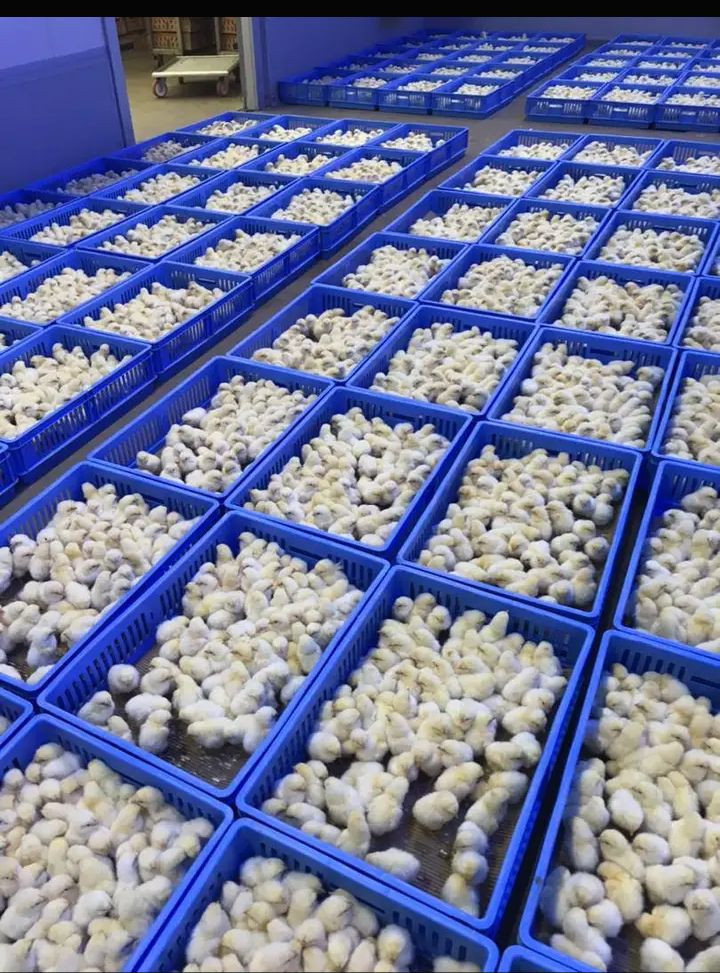
PREPARATION FOR DAY OLD CHICKS ARRIVAL
PREPARATION FOR DAY OLD CHICKS ARRIVAL
1.Disinfect and wash the house with chemicals such as vinquokill, Morigad or Vinquoqat
2.Turn on the brooder several days before the chicks are due to arrive to make sure it still works.
3. Buy Feeds down i.e broiler starter or chick mash
4.Buy feeders or wash the previous feeders on ground
5. Buy drinkers or wash the previous drinkers down
6.Check the temperature under the brooder to make sure everything is okay.
7. The floor under the brooder must be warm and dry to the touch before the chicks arrive
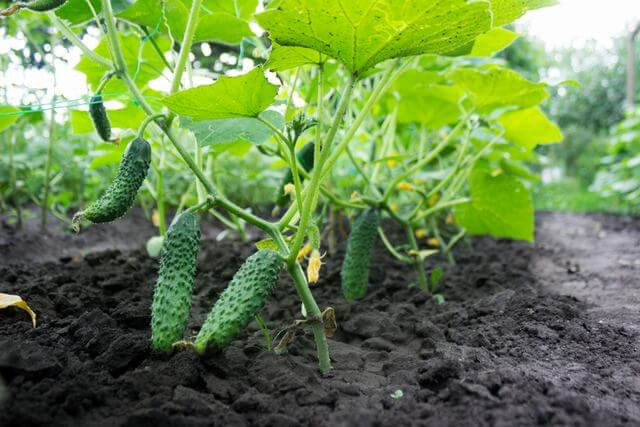
Have A Bountiful Harvest Of Cucumbers With Just One Secret Ingredient
How To Have A Bountiful Harvest Of Cucumbers With Just One Secret Ingredient
1. Prepare Nutrient-Rich Soil: Mix organic compost with your soil to provide essential nutrients and improve water retention. Cucumbers thrive in fertile, well-drained soil.
2. Transplant Seedlings at the Right Stage: As shown, transplant healthy seedlings when they have a few strong leaves and well-developed roots. This ensures they are ready to grow vigorously.
3. Support Growth with Trellises: Use sturdy trellises to guide the vines upward, improving air circulation and sunlight exposure while making harvesting easier.
4. Water Consistently: Keep the soil moist but not waterlogged, as cucumbers need consistent hydration for robust growth.
5. Boost Growth with Liquid Fertilizer: A diluted mixture of compost tea or a balanced liquid fertilizer every 1-2 weeks can enhance fruit production.
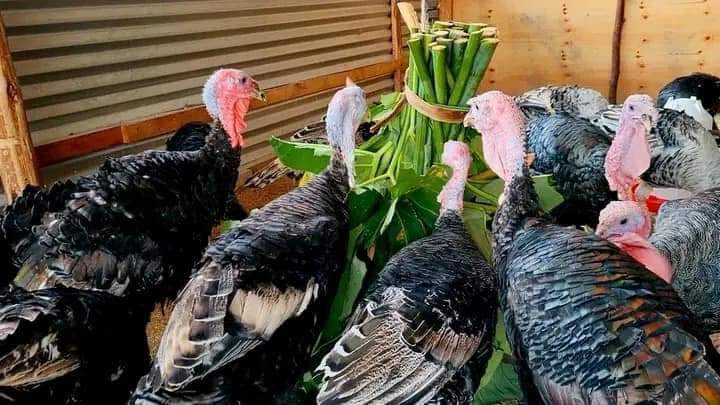
FARMING TIPS What It Takes To Start A Turkey Farming Business
FARMING TIPS
What It Takes To Start A Turkey Farming Business
turkey farming is one of the unique business ideas you can venture into.
Turkey are very good scavengers consuming earthworms, small insects, snails, kitchen waste and termites.
“Turkeys only need a lot of care when still young. Young poults need to be kept warm by being kept close to a source of heat
Turkeys start laying eggs at six to eight months and this production period is up to 24 weeks from the point of lay. Under proper feeding, a single turkey lays as much as 60-100 eggs annually. Nearly 70 percent of the eggs will be laid in the afternoon. When it comes to hatching, it can hatch as many as 15 at each sitting.
Specifics for breeding and incubating turkeys are quite different from chicken.
It is very challenging when turkeys start laying eggs because they do not want anybody to see them.
The incubation period is 28 days. There are two methods of incubation. Natural incubation with sitting females; naturally turkeys are good brooders and each can hatch 10-15 numbers of eggs. Only clean eggs with good eggshells and shape should be placed for brooding to get 60%-80% hatchability and healthy poults.
Turkeys require particular conditions which are different from those for other poultry birds. First of all, turkeys need a lot of space by virtual of their size.
Specifics for breeding and incubating turkeys are quite different from chicken.
Feeding
start your turkeys on starter mash. Make sure there is plenty of starter mash in the feeders, and that the chicks have fresh clean water at all times. Common varieties of turkeys include broad-breasted bronze and Broad-breasted white.
Feed for turkey poults must contain at least 24 per cent protein (not found in many commercial feeds), 2 per cent calcium and 0.9 per cent phosphorus.
Turkeys require about six square feet of space each.
Young ones
For a start, a lamp that provides 100F is required. The temperature should be lowered by five degrees a week thereafter.
Young turkeys can be hard to look after as they have been known to ii eat their litter.
Remember that turkeys are curious birds. It is hard to tell what they can get into. You should strive to keep the area where your turkey lives free of hazardous elements like oil.
Facts about turkey meat
Turkey meat has nutritional and sensorial properties which make it almost ideal raw material for rational and curative nutrition.
People prefer turkey meat because of its leanest nature.
It is also rich in essential amino acids and vitamins like niacin, vitamin B6 and B12. It is rich in unsaturated fatty acids and essential fatty acids and low in cholesterol.
A well-fed mature turkey will give over 90 eggs per year. Turkeys are known for their protein content which is good for the body and a good source of amino acids. Just one serving of turkeys provides 65% of your recommended daily intake of protein.
Turkey is known to contain traces of minerals, thought to aid in cancer prevention. It contains selenium, which is essential for the healthy function of the thyroid and immune system. Selenium is an antioxidant and protects against cancer.
Turkey is considered a good source of vitamins.
Saturated fat is necessary for biological functions, hormone production, padding for organs and energy. While saturated fat is necessary for a healthy body, most moderately-active people need to avoid too much of it in their diet. Turkey has under 12% of the recommended daily allowance of saturated fat per 4oz.
Grass-fed turkey raised under organic conditions conveys the most health benefits. Grass-fed turkeys offer higher nutrition and are superior to birds given antibiotics or raised without access to natural pasture.
Diseases
Fowl pox disease is a viral infection that attacks turkeys
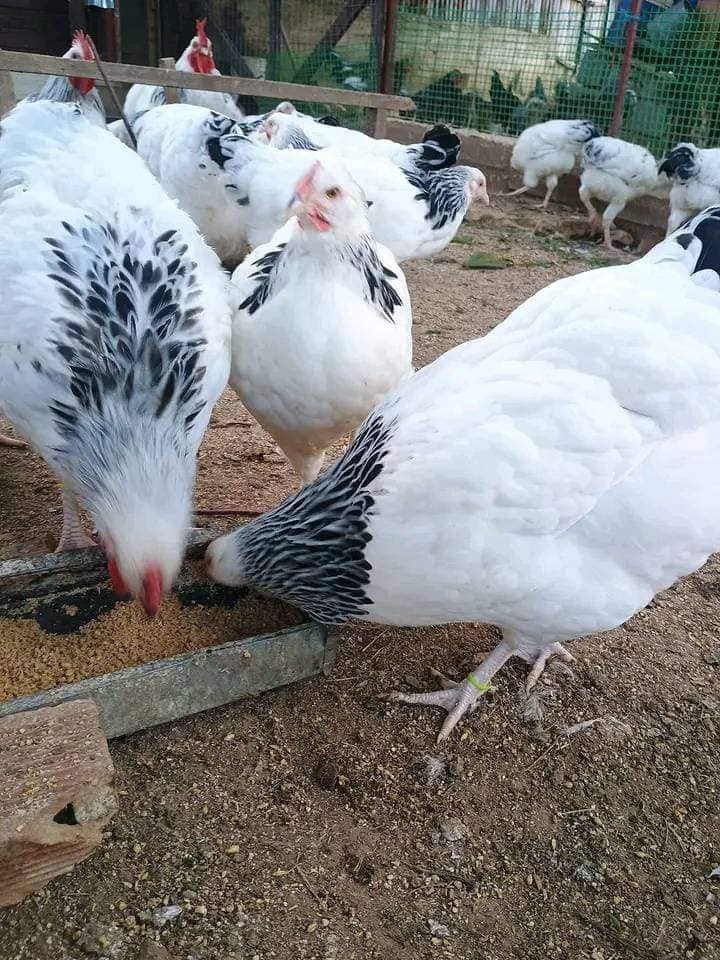
MISTAKES FARMERS MAKE IN POULTRY FARMING. WORTH knowing.
MISTAKES FARMERS MAKE IN POULTRY FARMING. WORTH knowing.
1.)Not knowing the market: Some farmers jump into poultry farming without checking what people really want to buy. They don’t study the market first which is a big mistake. Learn about market demand. Obey the laws of demand and supply. Don't produce what the market isn't interested in.
2.)Not taking it seriously: Poultry farming isn’t just about selling eggs and meat. It’s a real business that needs good planning and management. If you don’t treat it seriously, you won’t succeed in it.
3.)No clear goal: Big poultry farms didn’t just pop up overnight. They had a plan and worked towards it. If you want to grow big you need to have a goal and work hard to reach it.
4.)Going it alone: Trying to do everything by yourself without getting help from experts can make things harder. It’s better to learn from people who know what they’re doing.
5.)Giving up too easily: Farming can be tough and things might go wrong.Risks such as theft, diseases or bad weather are bound to happen but giving up isn’t the answer. You have to keep going and learn from the challenges.
6.)Wanting to get rich quick: Some farmers want to make a lot of money fast, but that can lead them to fall for scams. It’s better to build your business slowly and steadily and learn from your experiences.
In short, to succeed in poultry farming, you need to understand what buyers want, manage your farm well, have a goal, get advice from experts, be tough when problems come, and grow your business step by step.
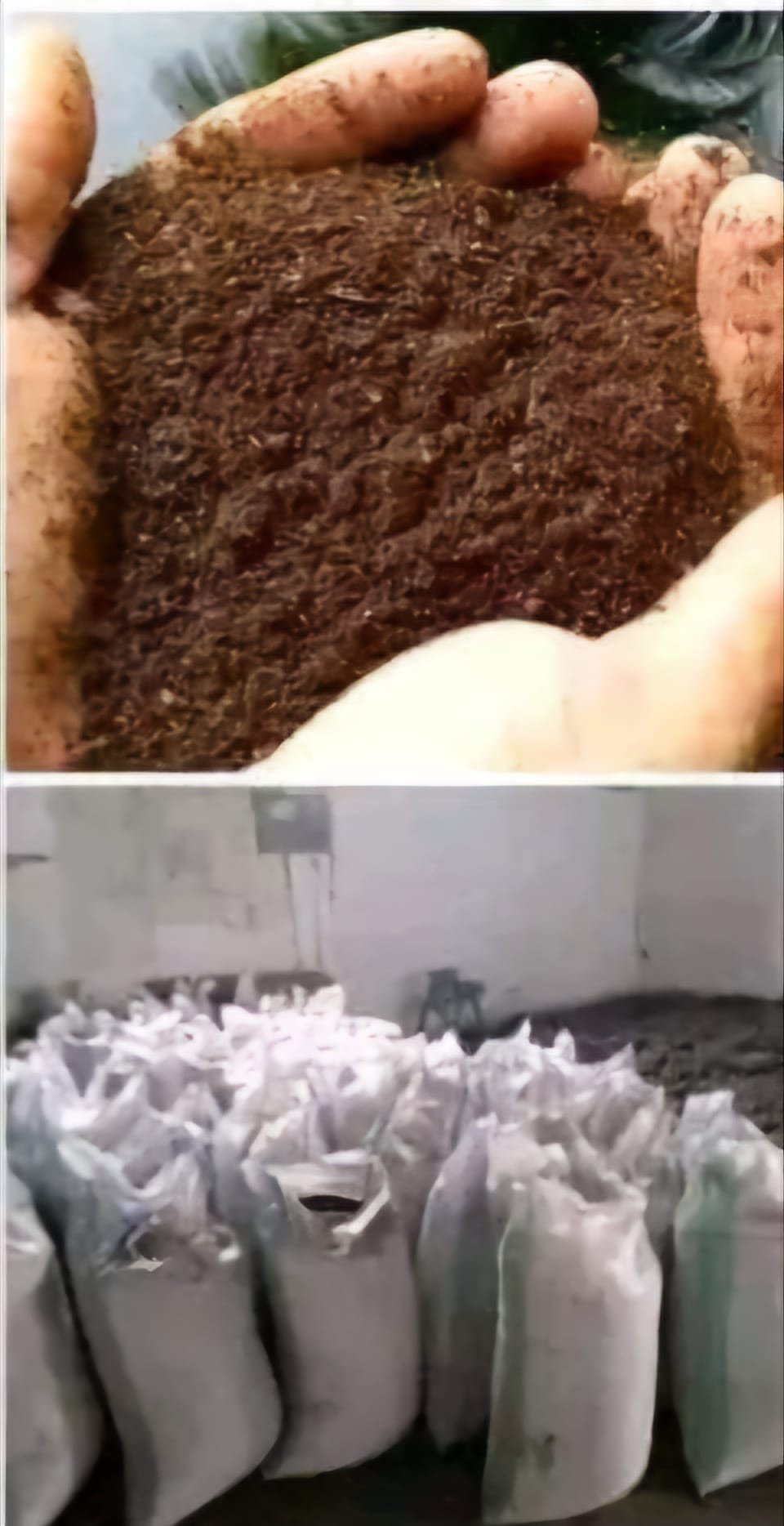
Here is a breakdown of NPK analysis for each type of manure. As a vegetable farmer, you should know these:
Here is a breakdown of NPK analysis for each type of manure.
As a vegetable farmer, you should know these:
1. Chicken Manure:
Nitrogen (N): 1.1% - 1.4%
Phosphorus (P): 0.8% - 1.1%
Potassium (K): 0.5% - 0.8%
2. Goat Manure:
Nitrogen (N): 0.7% - 1.1%
Phosphorus (P): 0.3% - 0.5%
Potassium (K): 0.5% - 0.8%
3. Pig Manure:
Nitrogen (N): 0.5% - 0.8%
Phosphorus (P): 0.4% - 0.7%
Potassium (K): 0.3% - 0.5%
4. Rabbit Manure:
Nitrogen (N): 2.4% - 3.0%
Phosphorus (P): 1.4% - 2.4%
Potassium (K): 0.6% - 1.5%
5. Sheep Manure:
Nitrogen (N): 0.7% - 1.2%
Phosphorus (P): 0.3% - 0.5%
Potassium (K): 0.5% - 0.9%
6. Cow Dung:
Nitrogen (N)= 0.5%- 1.5%
phosphorus (P)= 0.15%-0.25%
potassium (K)= 0.5%-1.5%
These values can vary based on factors such as diet, age of the animal, and bedding material.
Recommendations:
Chicken and rabbit manure have higher nitrogen content, this makes them great for boosting leafy growth in plants.
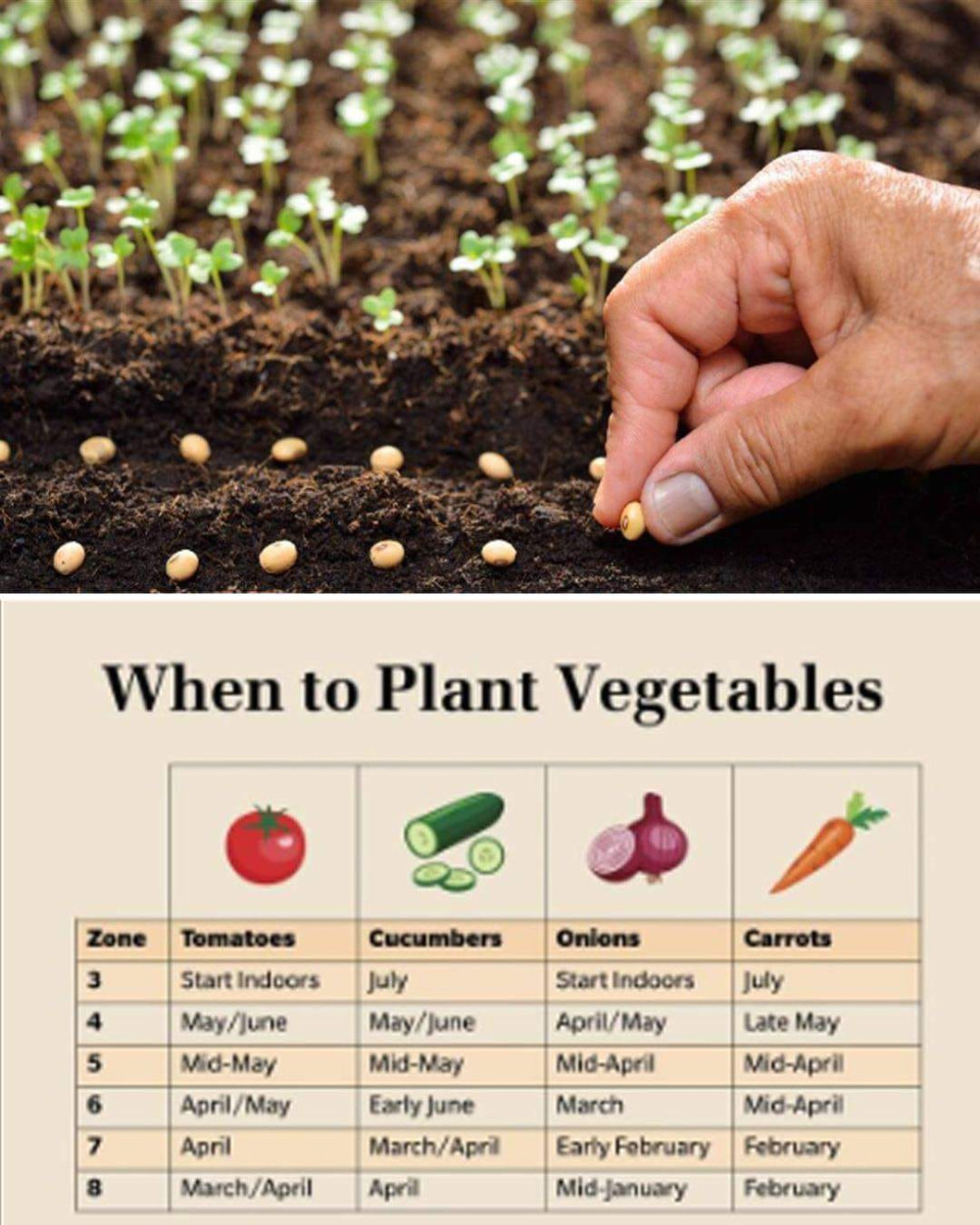
The Ultimate Guide to when to plant vegetables and why Best Times to Plant Popular Vegetables:
Best Times to Plant Popular Vegetables:
Now let’s take a closer look at when to plant some common vegetable crops:
Tomatoes: Wait until after the last frost date to plant tomatoes outdoors. Soil temperatures should be above 60°F (15.5°C) for optimal growth.
Carrots: Carrots can be planted as soon as the soil can be worked in early spring. Sow seeds directly into the ground for best results.
Peppers: Peppers are warm-season crops and should be planted after the danger of frost has passed. Soil temperatures should be around 70°F (21°C) for successful transplanting.
Lettuce: Lettuce prefers cooler temperatures and can be planted as soon as the soil can be worked in early spring. For a continuous harvest, sow seeds every few weeks throughout the growing season.
Beans: Beans are warm-season crops that should be planted after all danger of frost has passed. Soil temperatures should be above 60°F (15.5°C) for optimal germination.
Timing is everything in gardening, especially when it comes to planting vegetables. By understanding the optimal planting times for different crops and the reasons behind these timing considerations, beginners can set themselves up for a successful and bountiful harvest. Remember to take into account your local climate, frost dates, soil temperature, and day length when planning your planting schedule. With a bit of knowledge and careful planning, you’ll soon be enjoying the fruits (and vegetables) of your labor in your own garden. Happy gardening!
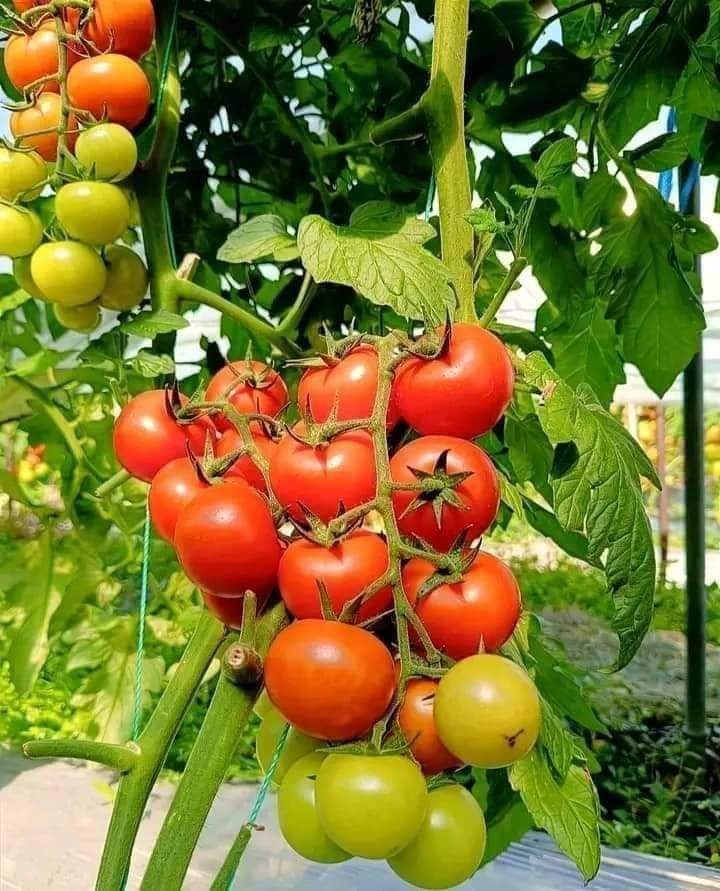
GROWING TOMATOES IN OPEN FIELD
Production: Hybrid is very costly and needs care in handling for maximum profit. Ana F1, Prostar and other kinds of seeds can be found in your local market as advised by the stockist.
Transplanting: The best way is to start from the nursery by raising seedlings (transplants). This will take 28 days to have quality seedlings for the field.
Seed rate and economic returns: Tomatoes need 200-500g/ha depending on spacing. On cost, it depends on the type of hybrid you go for.
Field production: Plants depend on the soil for physical support and anchorage, nutrients and water.
The degree to which the soil adequately provides these three factors depends on topography, type, structure and management.
For tomato production, proper tillage is crucial for adequate soil management and optimal yields. Land preparation should involve enough tillage operations to make the soil suitable for transplant establishment and to provide the best structure for root growth and development.
The extent to which the root systems of tomato plants develop is influenced by the soil profile. Root growth will be restricted if there is a hard pan, compacted layer or heavy clay zone.
Agronomy: Agronomic practices include nutrient management, irrigation, support, pruning, weeding, pest and disease management, harvesting and marketing.
i) Nutrient management: Tomato is a heavy feeder and a heavy yielder if attended well. Crop nutrient requirements change with each stage of growth.
The general principle is to apply phosphate fertiliser as basal dressing for root development. For this, DAP or TSP can be used at the rate of 150kg/ha.
After transplanting, either urea or CAN can be used for leaf establishment. Apply urea after 2-3 weeks or CAN in the fifth week. Both are applied at the rate of 200kg/ha.
At the onset of flowering, top dress with NPK at 200kg/ha. A compound fertiliser is necessary for the supply of N, P and especially K that is needed for flowering.
The NPK top dress can be repeated after the first harvest. To correct micro-nutrient deficiencies, foliar feeds can be applied alongside the regular pesticide applications.
Inadequate calcium can lead to blossom end rot disease, which can be corrected by applying calcium fertilisers.
(ii) Irrigation: The amount and frequency of irrigation depends on prevailing weather conditions and the stage of growth.
Avoid irrigation in the evening to prevent disease development. Apply water regularly during dry spells to reduce physiological problems.
Irrigation should also be done after each harvest. Avoid excessive watering as this may lead to leaching of nutrients and waterlogging.
(iii) Support: Plant support is done by trellising the tomato on poles and wires. This is usually done early at three weeks after transplanting to avoid plant damage. This depends on the hybrid variety.
(iv) Pruning: Remove side shoots, laterals, old leaves, diseased leaves and branches and overshadowed lower leaves by hand, which turn to sinks of photosynthesis.
After formation of the first fruit cluster of mature green tomatoes, remove all the lower older leaves to allow for ventilation and disperse food to the fruits (defoliation).
Flowers should be pruned to 5-6 per cluster for medium-large sized fruits.
(v) Weed management: The crop stand should be kept free of weeds at all time, because weeds compete for nutrients and are also vectors for disease.
Hand weeding is recommended both for the greenhouse and outdoor tomatoes.
(vi) Pests and diseases: Always scout for pests and diseases in the morning because this is the best time to get all the pests on the plant.
Common pests include aphids, thrips, whiteflies, cutworms, bollworms, leaf miners, spider mites and nematodes. Common diseases include wilts, blight, leaf spots and mildews.
Tomato diseases
Late blight: The disease, which was responsible for the Irish potato famine in the mid-nineteenth century, is caused by the fungus-like oomycete pathogen Phytophthora infestans.
It can infect and destroy the leaves, stems, fruits, and tubers of both potato and tomato plants.
Bacterial wilt: The disease is very common particularly during the rainy season but also when there is excess moisture or humidity in the greenhouse.
This disease can spread very fast wiping away plants within a short time. The disease also affects fruits.
Symptoms:Dropping of leaves. The disease leads to rapid death of the entire plant. Management: Crop rotation, management of nitrogen and field hygiene.
Fusarium wilt: Soil-borne fungus that infects tomatoes at any age. The wilt organisms usually enter the plant through young roots and then grow into and up the water conducting vessels of the roots and stem.
Infected leaves later show downward curling, followed by browning and drying.
Management: Seek advice from nearby agrovet.
Early blight: Disease development is most serious during warm wet conditions. Tomatoes infected with early blight develop small dark brown to black spots on lower shaded leaves, stems and fruits.
In older crops, stem death occurs while leaves fall off the crop and fruits drop prematurely.
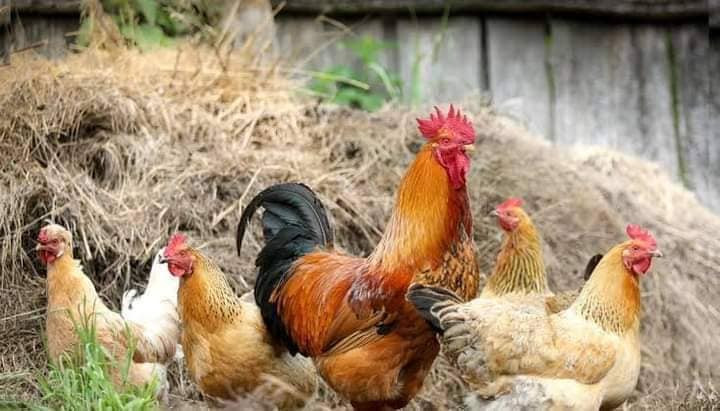
How to Start a Free-Range Chicken Farm with Limited Resources:
The small start-up of free-range chickens is an excellent way into farming, but it doesn't have to break the bank! This is how you can do it in easy, inexpensive steps:
1. Plan Your Space: Find a small portion of your backyard that is secure. Each chicken has 1-2 square meters for fowl roaming and scratching.
2. Choose the Right Breed: Go for hardy, dual-purpose breeds such as Rhode Island Reds or Australorps that can live on little and give eggs and meat!
3. Build a Simple Coop: Use recycled materials, such as wood pallets or bamboo, to make a cozy, safe space for roosting and nesting.
4. Feed with Local Resources: Supplement with kitchen scraps, adding local grains such as corn. Chickens also love insects, so let them forage!
5. Daily Fresh Water: Simplify it with easy-to-clean containers for fresh water.
6. Healthy Chicks: Keep them clean, add natural concoctions internally, such as garlic and turmeric, to keep them healthy and content.
7. Market Your Eggs in Your Community: Spread the word to your family, friends, and neighbors. Emphasize to the health-conscious customers the advantages of free-range and naturally-raised chickens!
Free-range farming can be affordable and rewarding! With a little ingenuity, you will soon be gathering fresh eggs and even expanding your flock.
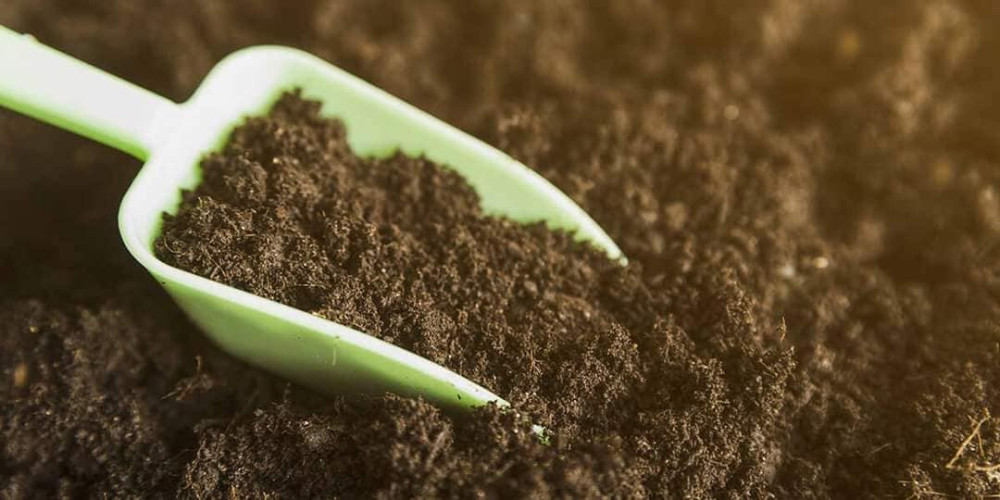
How to Make Soil Fertile Naturally:
Improving soil fertility is key to successful gardening. Here are some effective methods for creating rich, productive soil:
1. Coverage (Mulching): Covering the soil with organic materials, like leaves or straw, helps retain moisture, prevents weed growth, and reduces soil erosion. As mulch breaks down, it adds essential nutrients back into the soil.
2. Use of Cover Crops: Planting cover crops such as legumes or clover helps aerate the soil, promotes beneficial microbes, and when decomposed, provides valuable nutrients to the soil. Cover crops also reduce erosion and improve soil structure.
3. Use of Organic Matter: Adding compost, aged manure, or green manure is a great way to enrich the soil naturally. Organic matter boosts microbial activity, improves soil structure, and increases water-holding capacity.
4. Tillage Minimization: Reducing tillage preserves the soil structure and encourages the growth of beneficial organisms. Excessive tilling can disrupt soil layers, causing erosion and depleting nutrients.
5. Soil Analysis: Testing your soil can help you understand its pH level and nutrient content. A soil analysis provides guidance on specific nutrients or adjustments needed to make your soil ideal for planting.
6. Crop Rotation: Crops are rotated each season, preventing nutrient depletion and reducing pest and disease buildup in the soil. This allows different crops to use and replenish various nutrients, maintaining soil balance.
Combining these practices can create a fertile, sustainable soil environment that supports healthy plants and high yields. Healthy soil is the foundation of any product
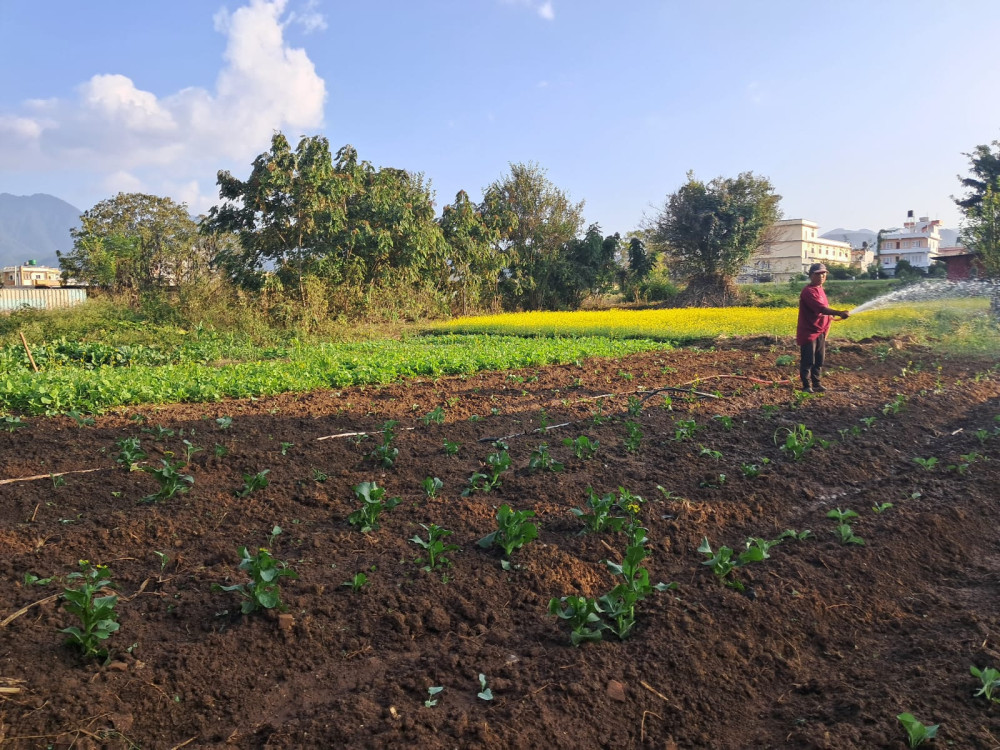
Skills you need to succeed in agriculture
Agriculture is a diverse field that requires a wide range of skills. Whether you're interested in farming, research, or agribusiness, these skills will be valuable:
Technical Skills:
Agricultural Machinery Operation: Knowledge of tractors, combines, and other farm equipment.
Animal Husbandry: Understanding of animal care, breeding, and nutrition.
Crop Management: Expertise in planting, cultivating, and harvesting crops.
Soil Science: Knowledge of soil composition, fertility, and conservation.
Agro-Processing: Technical skills in agro-processing involve food processing, preservation, and value addition.
Technology: Proficiency in using agricultural software, GPS systems, and other technological tools.
Data Science and Machine Learning: With the increasing use of technology in agriculture, skills in data analysis and machine learning are becoming essential.
Acquiring technical skills in agriculture is important for Nigerians to enhance productivity, food security, and sustainable agricultural practices.
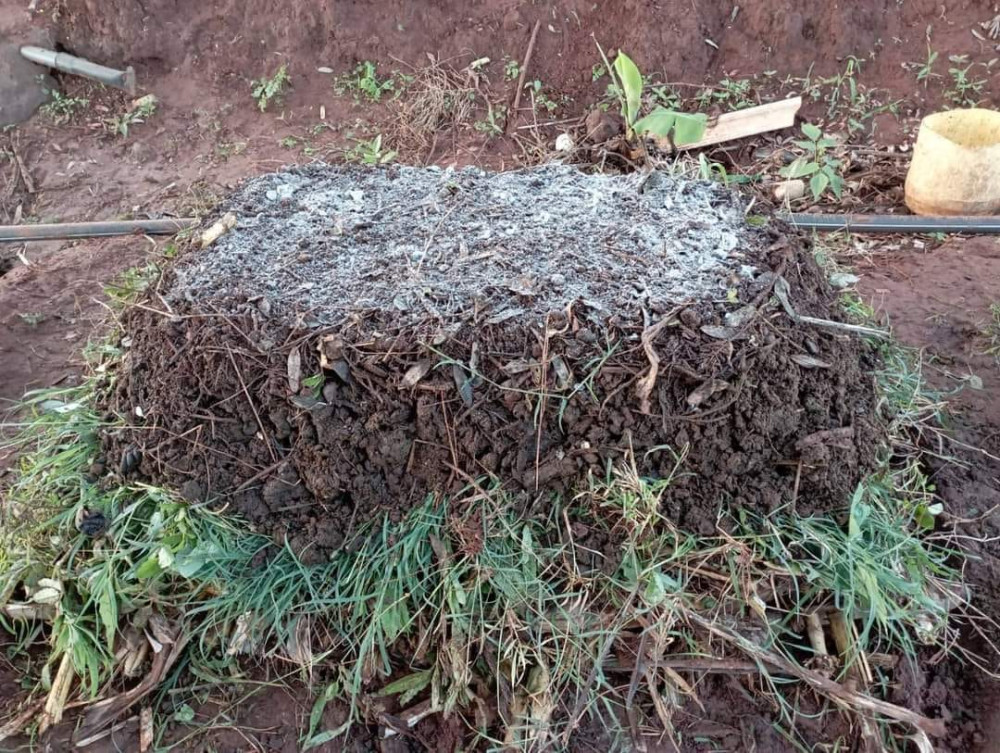
Composting and other alternative nutrition.
Composting and other alternative nutrition.
If there is one thing that is absolutely vital in Soil Regeneration, it is COMPOST. Composting is the natural process of recycling organic matter, such as leaves and food scraps, into a valuable fertilizer that can enrich soil and plants.
I grew up knowing only the anaerobic composting process i.e. the pit method where organic materials are put in a pit, covered with soil and left to decompose slowly without oxygen. In the process of anaerobic composting, methane, one of the chief greenhouse gases, is released into the atmosphere. Also the heat generated in anaerobic composting is not sufficient to kill all pathogens and weed seeds. It also takes longer than aerobic composting.
In aerobic composting, the organic materials are heaped, exposing them to oxygen. Decomposition is faster and only a small amount of Carbon dioxide which can be easily absorbed by surrounding plants is released. Furthermore, the heat generated kills all pathogens and weed seeds. We are firm proponents of aerobic composting.
Other nutrients that one can use to feed crops include vermiliquid, vermicompost, black soldier fly frass and green tea extracted from botanical plants. Farmers have actually become very good at coming up with organic nutrition with some reporting impressive results with rabbit urine as a pesticide and biofertilizer. There are also manufactured, tested and registered over the Counter biofertilizers that one can purchase.

Meaning of Drought in Agriculture
Drought is a condition that affects the land when it does not receive enough water,
From rainfall
From irrigation
Leading to a lack of moisture
Leading to Deterioration of
plants
Soil
Groundwater
Drought can have impacts on the environment
And occur due to several factors like:
Climate change,
Prolonged dry weather,
Poor water resource management.
The effects of drought can be mitigated by adopting strategies such as:
Improving water management,
Using efficient irrigation techniques
Cultivating drought-resistant crops.

Training Schedule
Training Schedule
Training classes on the topic of organic farming, mushroom, moringa, bio gas, solar system, drip irrigation, green house, kitchen garden, roof top farming, hydroponics, aquaponics, poultry and goat farming, some vegetables such as cucumber, tomato etc, were conducted. More than 100 students were trained in green skill development and mushroom cultivation. Syllabus and learning sessions were designed by staffs. 45 days of training classes including theory, practical and field visit were designed and conducted daily for 60 minutes. To uplift learning ability among the students, smart classroom and digital tools were used.
Till the date 6th batches had completed the training classes and 7th batch classes is going on. Training classes were taken by the experienced trainer in the field of agriculture. The training classes had a positive impact on the participants as they gain valuable knowledge and skills in different field of agriculture.
Training classes were conducted for the tailoring, beauticians, computer and diploma students of Don Bosco Institute. All the students were belonging from the different districts. Overall, the training classes served as a valuable learning experience to the students.
Table: Number of Trained Students
| S.N | Batch | Number of Students |
| 1. | I | 20 |
| 2 | II | 20 |
| 3 | III | 23 |
| 4 | IV | 20 |
| 5 | V | 25 |